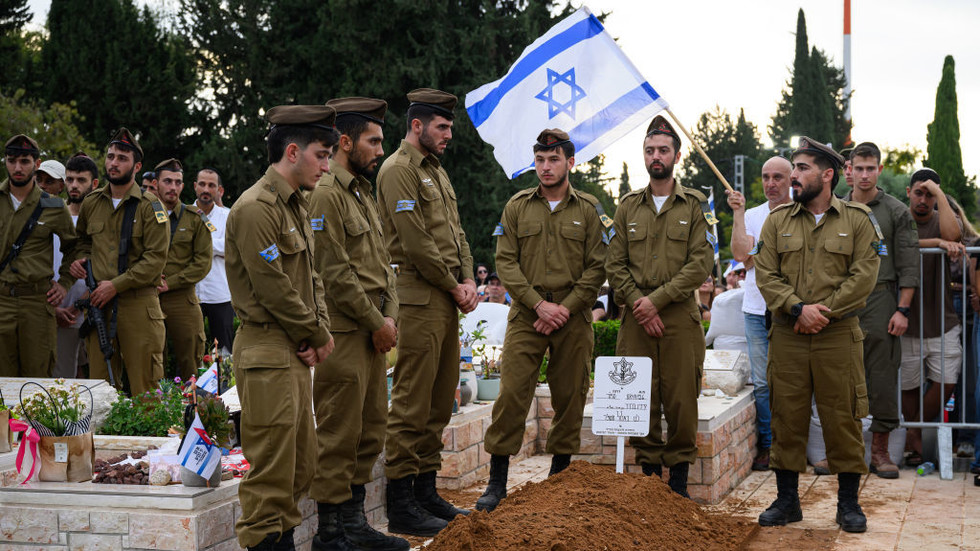The ongoing Israel-Hamas conflict has escalated significantly over the past year, with the Israel Defense Forces (IDF) reporting a staggering loss of at least 726 troops, marking it as the deadliest conflict for Israel in nearly five decades. This conflict’s toll surpasses that of any recent military engagements, especially notable when compared to the 1973 Yom Kippur War, in which over 2,600 Israeli soldiers were killed. This current conflict began with a surprise attack from Hamas on October 7, 2023, which resulted in approximately 1,100 Israeli fatalities and the abduction of around 250 individuals to Gaza. In response, Israel declared war on Hamas and initiated a substantial bombing campaign that transitioned into ground operations a few weeks later, commencing October 27.
The IDF’s casualty figures highlight not just the fatalities but also the extensive injuries sustained by their troops. Over 4,500 soldiers have been reported injured since the onset of hostilities, with 2,300 injuries occurring during ground operations in Gaza. These statistics reveal the extensive human costs the military is enduring, and they reflect the complex nature of the combat engagements. The IDF has stated that the casualty counts only reflect troops whose names are cleared for public release, indicating that actual losses may be higher than reported, especially concerning friendly fire incidents and operational accidents, which have accounted for 56 deaths.
Hamas’ initial offensive led to widespread destruction and loss of life within Israel. In retaliation, Israel’s military operations have resulted in an enormous toll on the Palestinian population. Estimates suggest that nearly 42,000 Palestinians have died as a consequence of the ongoing conflict, with a significant number of those fatalities being women and children, based on figures released by Gaza’s health ministry. The United Nations has validated these numbers, although it does not differentiate the count between civilians and militants. According to the IDF, their operations have resulted in the elimination of approximately 17,000 Hamas members and militants, a figure which complicates the narrative as it suggests a high civilian toll relative to the number of combatants killed.
Moreover, the war has extended beyond Gaza, with increasing tensions along the Israel-Lebanon border. The IDF reported killing around 800 “terrorists” in Lebanon, which includes an estimated 90 Hezbollah commanders. This conflict has drawn Israel into deeper military engagements in neighboring Lebanon, where ongoing airstrikes and ground operations have caused over 2,000 fatalities, according to Lebanon’s health ministry, with children among the impacted. Hezbollah claims that it has noticeably inflicted pain on Israeli forces, asserting that its fighters have killed more than 25 Israeli troops amidst these escalating operations.
Overall, the Israel-Hamas war has generated a complex humanitarian disaster, deeply affecting both Israeli and Palestinian communities. The staggering loss of life, particularly among civilians in Gaza, raises considerable international concern and criticism regarding the conduct of military operations on both sides. The persistent cycle of retaliation and casualties has only worsened living conditions in the region, contributing to a humanitarian crisis that no immediate resolution seems to address. The war has also exacerbated existing tensions, leading to increased military activity, operational accidents, and a growing casualty count that continues to rise with ongoing engagements.
Looking ahead, the uncertainty surrounding the conflict remains substantial. With both Israeli and Palestinian territories suffering extensive casualties and widespread destruction, there is an urgent need for diplomatic intervention and conflict resolution strategies. Addressing the underlying issues and grievances that have fueled such prolonged violence is essential to achieving lasting peace. The international community has a crucial role to play in fostering dialogue and advocating for measures that could bring an end to this tragic cycle of violence, ensuring that future generations do not bear the heavy burden of history’s conflicts. Both sides must grapple with the profound human costs of this war, with an emphasis on the necessity for compassion and a commitment to dialogue over further military confrontation.

